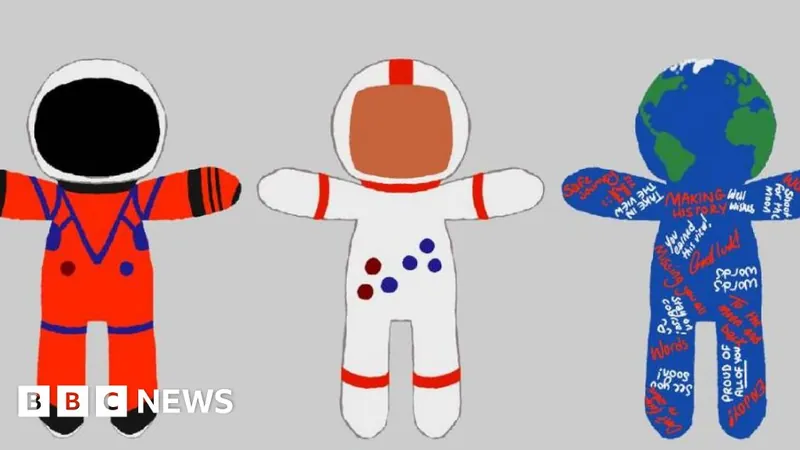
Revolutionizing Materials: Trinity College's Laser Machine Unveils Secrets of High-Speed Micro-Particle Impacts
2025-07-28
Author: Amelia
A Game-Changer in Material Science
In an unprecedented leap for engineering, researchers at Trinity College Dublin have unveiled a groundbreaking device that meticulously examines the impact of micro-particles crashing into surfaces at jaw-dropping speeds. The Laser Ablation Particle Acceleration and Observation system, or LAPAO, is touted as the sole machine of its kind in Europe, taking over two years of dedicated effort to design and construct.
High-Speed Particle Physics Unlocked
Equipped with cutting-edge laser technology, the LAPAO can propel particles ranging from 10 to 60 micrometers at velocities approaching 1 kilometer per second—equivalent to nearly three times the speed of a bullet! A specialized camera captures these rapid-fire impacts at an astonishing rate of one billion frames per second, allowing researchers to study whether the particles stick, bounce, or shatter upon contact.
Improving Material Design and Coatings
The implications of this research are profound. Engineers can leverage the insights gained from LAPAO to refine materials and coatings used in crucial applications, including aircraft parts, medical implants, and machinery protection. The development team is particularly focused on enhancing a technique known as 'Cold Spray', a method of applying or repairing metallic components without the need for melting them.
From Guesswork to Accurate Predictions
Previously, TCD researchers relied heavily on computer models to predict outcomes in their studies. Now, with LAPAO, they are transitioning from guesswork to empirical insights, fundamentally changing the design and manufacturing landscape for advanced materials. Leo Devlin, a Ph.D. candidate and integral member of the STAM team, enthused, "With our machine, we can finally visualize real material interactions within minutes, refining our understanding of the cold spray process tailored for a variety of materials."
Wide-Ranging Applications and Future Prospects
Cold spray technology has made significant strides in recent years, branching into advanced forms like laser-assisted and electromagnetic cold spray to enhance microstructure and performance. This innovative approach allows for metallic coatings to be applied without reaching melting points, relying on the critical principles of plastic deformation.
Today, the applications of cold spray extend beyond aviation, making inroads into the nuclear sector, automotive industry, and broader manufacturing fields. Prof. Shuo Yin, also from the STAM team, noted the utility of LAPAO in simulating high-velocity impacts relevant to contemporary challenges, such as the threats posed by debris impacting satellites—a growing concern in our increasingly congested orbit.









 Brasil (PT)
Brasil (PT)
 Canada (EN)
Canada (EN)
 Chile (ES)
Chile (ES)
 Česko (CS)
Česko (CS)
 대한민국 (KO)
대한민국 (KO)
 España (ES)
España (ES)
 France (FR)
France (FR)
 Hong Kong (EN)
Hong Kong (EN)
 Italia (IT)
Italia (IT)
 日本 (JA)
日本 (JA)
 Magyarország (HU)
Magyarország (HU)
 Norge (NO)
Norge (NO)
 Polska (PL)
Polska (PL)
 Schweiz (DE)
Schweiz (DE)
 Singapore (EN)
Singapore (EN)
 Sverige (SV)
Sverige (SV)
 Suomi (FI)
Suomi (FI)
 Türkiye (TR)
Türkiye (TR)
 الإمارات العربية المتحدة (AR)
الإمارات العربية المتحدة (AR)